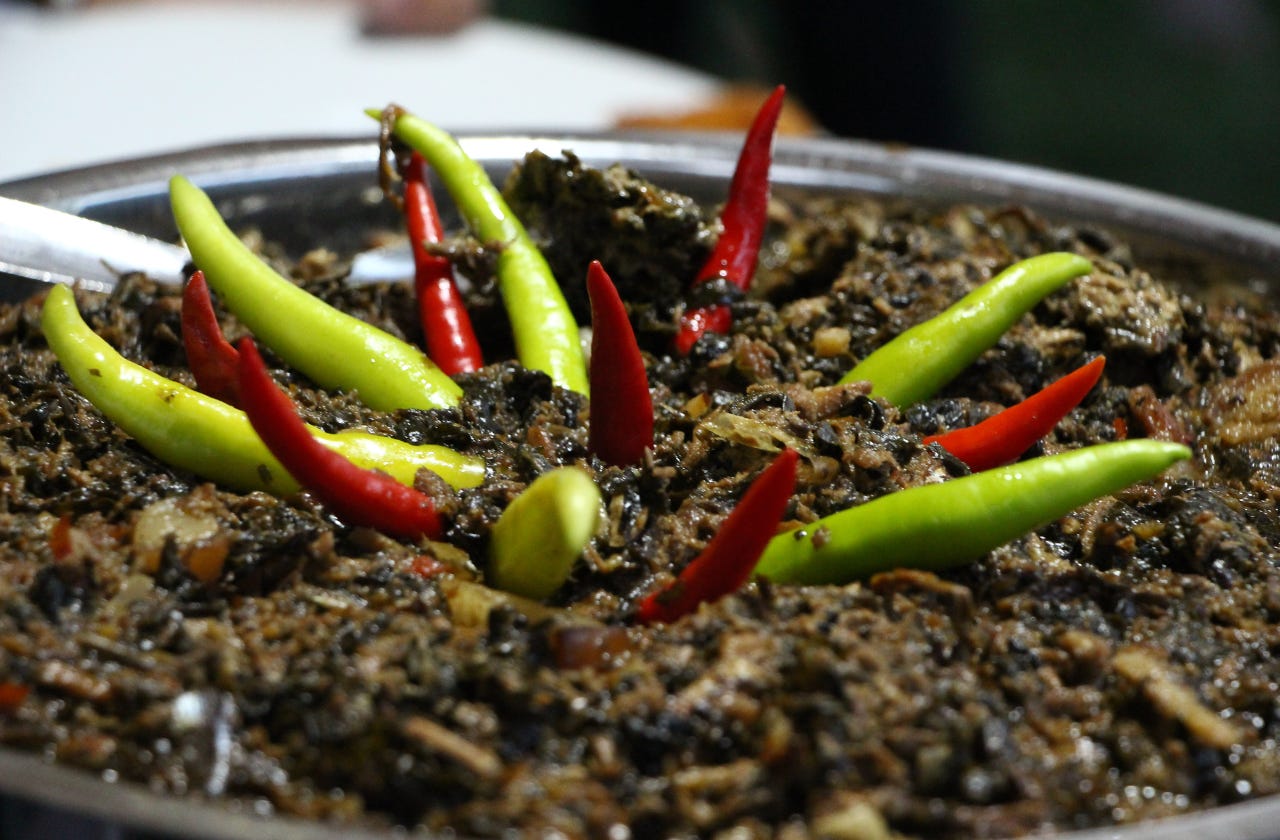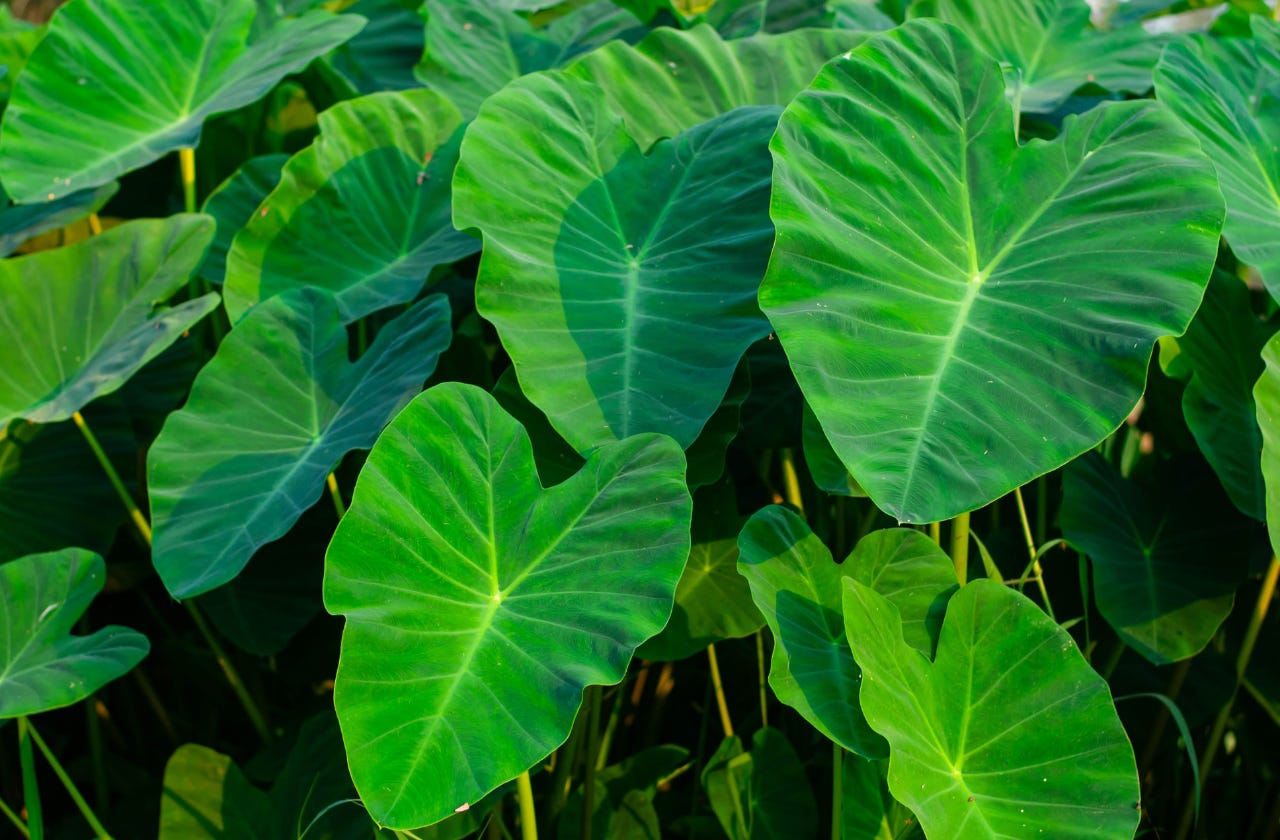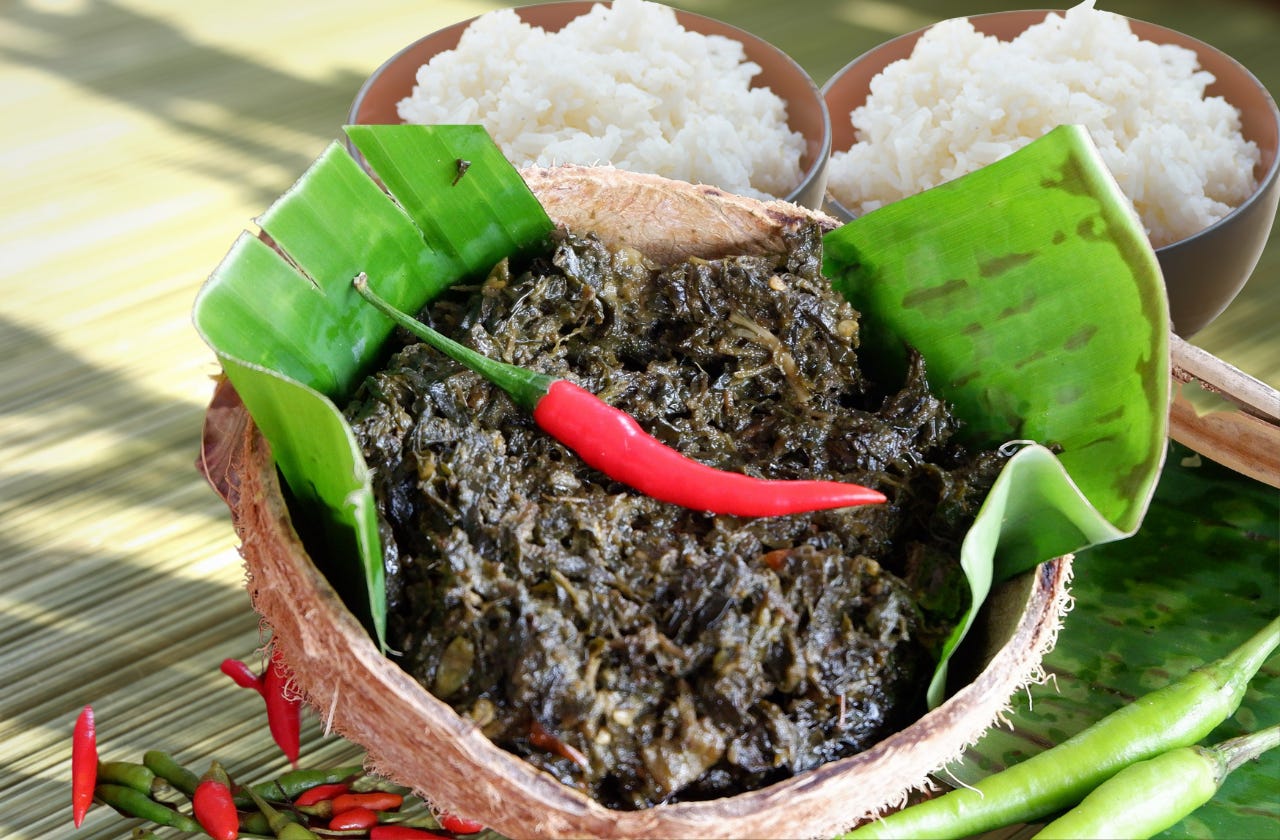Laing and the Humble Taro Leaf that Defines Bicolano Flavor
Learn more about the creamy, spicy classic that carries the soul of Bicolano cooking.
You know you’re in Bicol when the kitchen often smells slightly earthy, mixed with spices and fresh vegetables. The shelves are always stocked with gata (coconut milk) and sili (chili peppers), the two ingredients that go together like a married couple.
You can’t make any local dish without these two. With Bicolano ulam (side dish), think: creamy, umami, hot and spicy.
To outsiders, Bicol Express would be a top-of-mind dish from this region in the Philippines, but as a local, there’s an underrated dish that we never get tired of: Laing.
It’s a staple at fiestas, handaans (feast or banquet), and kitchen tables. Don’t be fooled by its appearance that looks like a blob of stewed greens. It’s a classic dish of Bicolano home and history.
BORN FROM INGENUITY AND ABUNDANCE
The Bicol Region, famed for its love of gata and fiery chilis, is home to a beloved traditional dish called Laing. Often mistaken for its rolled-up cousin Pinangat, Laing stands out as a stew of dried gabi (taro leaves) simmered slowly in rich coconut milk, infused with spices and often topped with bagoong (shrimp paste) or dried fish.
While both dishes share similar ingredients, Laing is typically dried and shredded, allowing the taro leaves to soak up all the creamy, spicy flavor.
Interestingly, the name “Laing” is thought by some to have roots in the Tagalog word “lahing”, meaning “long” or “tall”, possibly a nod to the long, stringy strands of taro leaves used in the dish. Whether or not this is etymologically accurate, what’s certain is that gabi itself plays a starring role in Bicolano cuisine. Its leaves are incredibly versatile, absorbing flavor while adding a distinct earthiness to any dish they touch.
The use of taro leaves in various ways across Bicol speaks volumes about the ingenuity and resourcefulness of Filipino cooking. But it’s not just about making do with what’s available. It’s about the elevation of the simple, locally-grown ingredients into something soulful, flavorful, and uniquely Filipino.
HOW THE GOLD IS MADE
The saying ‘good things take time’ couldn’t be more true when it comes to cooking Laing. It’s a dish that blends art with patience, starting with a crucial step: properly drying the taro leaves.
It’s a must in preparing the dish as fresh taro leaves contain calcium oxalate crystals that can cause an itchy, uncomfortable sensation when eaten, so tradition dictates that they be sun-dried thoroughly before use.
Once prepped, the leaves are gently simmered in thick, luscious coconut milk alongside aromatics like garlic, onion, ginger, and bagoong, with some cooks even adding lemongrass for an extra layer of depth.
A golden rule passed down through generations? Don’t stir the Laing. A belief passed down to home cooks that stirring taro leaves as they cook in coconut milk might release that dreaded itchiness. Whether it’s science or superstition, many home cooks still swear by it today.
Lastly, depending on which regional variations you follow, the dish could include proteins like dried fish, shrimp, or pork. And of course, no Laing is complete without the sili.
The heat level is totally up to you but many Bicolanos believe that spicier is better. This results in a creamy, spicy, umami-packed dish that hits you with both comfort and a kick.
HOW TO EAT LAING LIKE A TRUE BICOLANO
Each local has their own preferences for Laing. Some prefer theirs cooked with fresh leaves, some don’t like proteins on theirs, but I think we can all agree that Laing is best enjoyed with steaming rice, some classic Filipino ulam on the side, and with your clean hands!
To me, Laing tastes way better the next day when the flavor gets absorbed overnight. Aside from rice, I always pair it with something salty like adobo, fried or grilled tilapia, and—wait for it—chili garlic oil!
There’s something about the extra spice and garlic-y taste that elevates the flavor, and there must be something with the oil too because my family considers the Laing good when it glistens in oil.
Don’t worry, the oil naturally comes from the protein we add which is usually pork (so you can enjoy it without the chilis).
IT'S NOT A SIDE DISH
To call Laing just a side dish is like calling Mayon Volcano just a hill. For us Bicolanos, it represents our culinary pride especially when seen on tables outside the region. It represents resilience, creativity, and pagka-oragon (this word holds a depth of meaning that it deserves its own article someday).
Laing is served in everyday meals and celebrated during fiestas. It's a dish that comforts the homesick, and humbles the curious first-timer. Laing is a simple dish passed down through generations, and spiced with the soul of Bicol.
Whether you’re Bicolano by blood or just by appetite, a bite of Laing invites you into a culture that doesn’t shy away from heat, heart, or heritage.
In the end, Laing embodies something deeper than just a being a dish. It is memory, identity, and a taste of home. It tells the story of Bicol and of its families gathered around the table, of resourcefulness turned into artistry, and of a people whose spirit is as fiery as the sili they love.
To share Laing is to share a piece of Bicolano soul, one that continues to warm kitchens, hearts, and histories wherever it’s served.







My favourite dish!